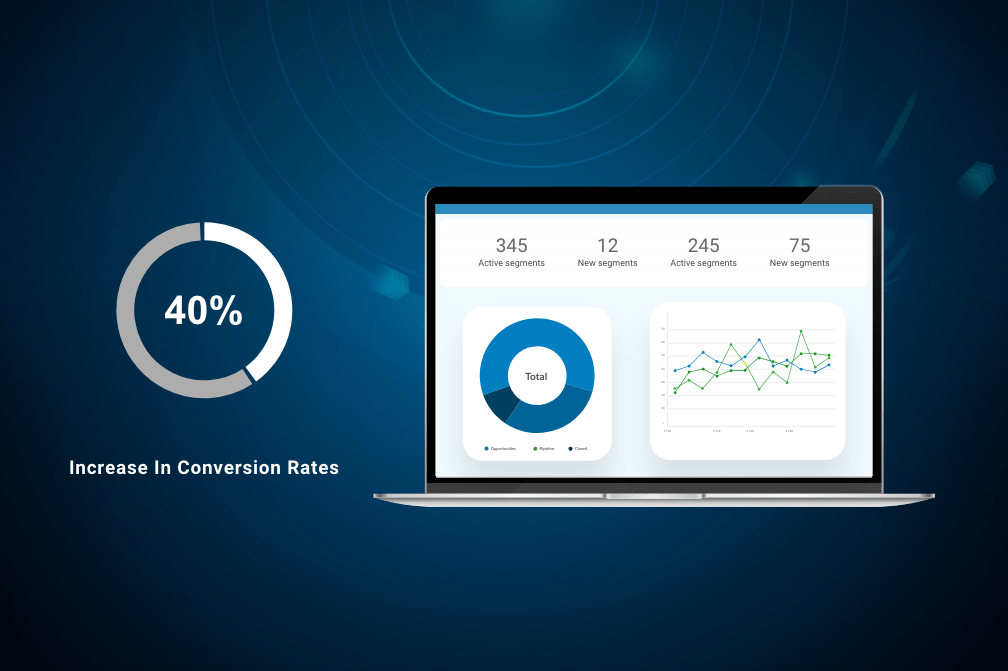Integrate SFMC and AEM to Maximize Your Marketing Potential

Table of Contents
The customer data platform (CDP) market is a rapidly growing industry that is expected to reach a value of USD 10.3 billion by 2025, with a compound annual growth rate (CAGR) of 29.3% from 2020 to 2025. The increasing demand for better customer insights and the need for effective marketing automation are the key drivers for this growth.
The major players in the CDP market included Microsoft, SAP, Oracle, up until now. With Salesforce and Adobe—the two biggest players in the marketing technology—leveraging CDP, there are some interesting insights we want to share about this move.
But first, more on CDPs.
CDPs are designed to be the brain of the martech stack, generating operational efficiency by enabling data democracy for business users and building the organization's single customer view. A best-of-breed technology strategy is made possible by CDPs, which ingest and organize data from a variety of heterogeneous data systems and are vendor-agnostic by design.
This marks the supreme attempt into customer data by Adobe and Salesforce from the execution and content layer. It's a BIG deal. not just for the market for customer data platforms, but also for marketing clouds.
Welcome, Adobe & Salesforce!
Moving on to the bigger question,
Why Integrate Salesforce Marketing Cloud (SFMC) and AEM (or Adobe CDP)?
Integrating SFMC and AEM (Adobe experience manager - formerly known as CDP) can help improve the effectiveness of your marketing campaign. Also it can help:
- Unify customer data from various sources into a single customer view
- Deliver personalized and relevant experiences across all touchpoints
- Improve marketing campaign efficiency and effectiveness
- Leverage AI and machine learning capabilities to enhance customer engagement
- Enhance segmentation and targeting capabilities
- Increase customer lifetime value through improved customer insights and engagement
- Streamline marketing workflows and reduce operational costs
- Improve marketing attribution and ROI measurement.
How to Configure Adobe Experience Manager to Integrate with SFMC?
You must first set up a remote access application in Salesforce before configuring AEM to integrate SFMC and AEM. After that, you set up the Salesforce cloud service to direct users to this remote access program.
Here are the steps to integrate SFMC and AEM:
- Navigate to Cloud Services in AEM. In Salesforce, select Third-Party Services and then click Configure Now.
- Make a brand-new configuration, say, developer.
- Log in to your salesforce account, or register for one.
- To access Connected Apps in Salesforce, go to Create > Apps (in earlier iterations, the workflow was Deploy > Remote Access).
- To link AEM with Salesforce, click New.
- Enter the contact email, API name, and connected app name. Enter the Callback URL, check the Enable OAuth Settings box, and then add an OAuth scope.
- To save the salesforce setup, click Save. You require a consumer key and consumer secret, which Salesforce generates, for configuring AEM.
- Insert the salesforce.com customer key and customer secret.
- Navigate to Cloud Services in AEM and select the earlier-created Salesforce setup (for example, developer). Enter the customer key and customer secret from salesforce.com by clicking Edit.
- To connect, click Connect to Salesforce. Salesforce requests that you permit the connection between your configuration and Salesforce.
- Go to your website's root page and click Page Properties. Next, choose Cloud Services, add Salesforce, and then pick the appropriate settings (for example, developer).
Connecting Your Salesforce Marketing Cloud Account
- To access the Sources workspace, choose Sources from the left navigation menu in the Platform UI. You can register for accounts using a number of sources on the Catalog screen.
- From the catalog on the left side of your screen, choose the relevant category. The search bar can be used to filter the connectors that are displayed.
- Select Salesforce Marketing Cloud from the Marketing automation category, and then click Set up.
- The page for Salesforce Marketing Cloud's Connect option displays. You have the option of using either new or saved credentials on this page.
For New Account
- Select New account if you are using new credentials. Enter your Salesforce Marketing Cloud login information along with your name and an optional description on the resulting input form. Select Connect once you're done, then wait a while for the new connection to develop.
For Existing Account
- Select the Salesforce Marketing Cloud account you wish to connect to, then select Next to carry on. This will connect an existing account.
Conclusion
SFMC and Adobe CDP integration can help you deliver personalized and relevant experiences across all touchpoints, while also streamlining marketing workflows and improving operational efficiency.
Combining SFMC and AEM allows you to leverage the strengths of each platform, enabling you to create and deliver targeted and effective marketing campaigns, manage and optimize content, and provide a seamless and integrated customer experience. Overall, this powerful combination of SFMC and AEM helps drive engagement by 45%, increase conversion rates by 40%, and accelerate your revenue by 14%.
Stuck with integrating your SFMC and AEM? Growth Natives’ marketing automation specialists have got your back! Get in touch with us at info@growthnatives.com or call us at +1 855-693-4769 to know how our marketing automation services can help streamline this integration of SFMC and AEM to accelerate your business operations.




